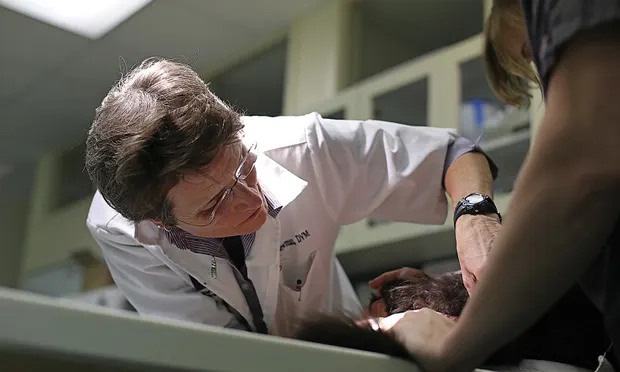Mentorship in the Veterinary Practice: Good for the Mentor & Mentee

In the veterinary profession, mentorship is traditionally defined as a relationship between experienced veterinarians and recent graduates who seek to expand their knowledge, confidence, productivity, and clinical skills in a private-practice setting.
Mentorship is essential to retain veterinarians in practices, and lack of mentorship has been cited as the primary reason new graduates leave their places of employment.1 However, mentorship can expand beyond the traditional roles of senior and junior veterinarians and apply to other team members. This may be in the form of a practice owner mentoring a new graduate, a lead surgical veterinary technician mentoring another technician into that role, or even a practice manager mentoring a veterinarian. Mentorship does not need to be a hierarchical relationship. It does need the mentor’s investment into teaching, coaching, and expanding the mentee’s knowledge, confidence, productivity, and clinical skills.
Related Article: Bringing on a New Associate: Is Mentorship the Answer?
Set the Framework
A successful program can be a challenge for both mentor and mentee. A mentoring relationship does not happen overnight or by circumstance; it takes time, energy, and effort, which are not readily available in a busy practice. For a successful relationship, the mentor and mentee must agree on the guidelines, which should include but not be limited to:
Accountability
Expectations of the relationship
Measurement of accomplishments
Method of feedback
SMART (Specific, Measurable, Achievable, Relevant,Time-bound) goals2
Time commitment.
For most practices, a mutually beneficial relationship leads to more clinically relevant skills, a greater sense of personal accomplishment, and a happier work environment for the mentee. The mentor may gain a team member who is more productive, causes less stress, and provides better patient care, which in turn drives client satisfaction and a more successful practice (see Figure).

Figure. Positive Mentor–Mentee Relationship Cycle, courtesy of Dr. Kristen Britton
Emotional Intelligence
Anyone can be a mentor in some capacity, but a great mentor—one who fosters a mutually beneficial relationship—must have emotional intelligence (EI), which is defined as one’s knowledge of, response to, and management of personal emotions. EI is outside the scope of what most veterinary schools and technical programs teach or exhibit, and can be difficult for a practice to embrace. EI is, however, crucial for achieving a healthy mentor–mentee relationship.3 Multiple resources about EI are available, with Steven Covey’s Seven Habits of Highly Effective People probably the most well-known.4
Related Article: What Is Emotional Intelligence & Why Does It Matter in Veterinary Medicine?
Setting Boundaries
Although a mentor–mentee relationship has many benefits, it can cause hardship for both parties if proper boundaries are not established.
Boundaries for the mentor:
Do not expect the mentee to be just like you.
Do not give advice automatically without a thorough discussion.
Allow the mentee to determine solutions.
Do not expect your advice to be followed blindly.
Do not avoid uncomfortable topics, such as medical philosophies regarding convenience euthanasia and pain management protocols, which should be addressed for the practice to present a united front.5
Boundaries for the mentee:
Be cognizant of the mentor’s time.
Be accountable for the direction of the relationship.
Do not hesitate to bring up struggles and problems.
Ask questions to help the mentor provide guidance.
Self-evaluate honestly.
With time and effort on both sides, the mentor–mentee relationship can blossom and create a better environment for everyone in the practice.
|
2008 AAHA Mentoring Guidelines. American Animal Hospital Association; https://www.aahanet.org/Library/Mentoring.aspx
Mentorship Toolkit. American Animal Hospital Association & VetPartners; https://mentorship.aahanet.org/Default.aspx
|
Editor's note: Dr. Kristen Britton has gained valuable mentorship experience through partnering with several veteran mentors. She co-created the AAHA Mentorship Toolkit after realizing the gaps in veterinary education.